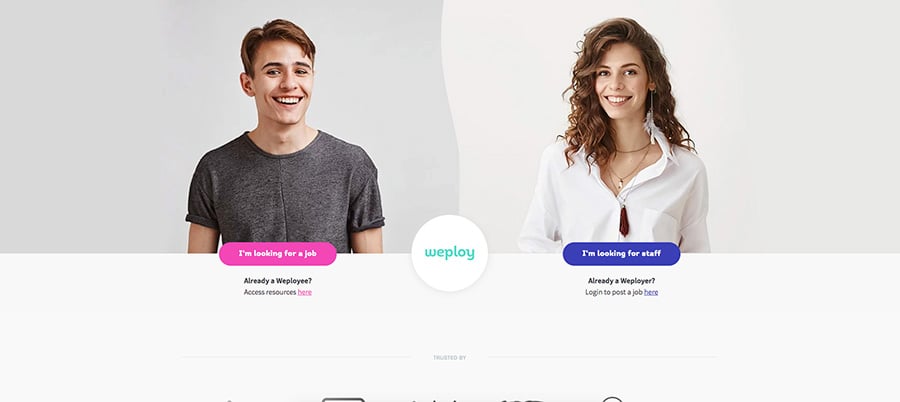When it’s time to bring your A-Game, we're told that automation is the essential tool for effective marketing! "Forget the time wasting repetition of tasks and embrace the technology that’ll help you convince and convert customers, even while you’re away from a screen" they all say... but how do we apply the goodness of marketing automation without losing the genuine interaction we crave from our customers?
HubSpot is our number one tool for streamlining and maximising our own marketing efforts, as well as the efforts of our clients. However, even tools as useful as HubSpot are only as good as the marketing strategy behind them. We’ve all heard of the ways which marketing automation can be a win but we’ve also all had the bitter taste of automation show up unannounced and felt violated by it's tactless approach. By using automation to do your handy work, you could be saving time and money in the short term, while doing considerable damage to your long term business goals.
When marketing automation just isn't the answer.
When you sit down for your next marketing meeting, consider these instances…
1) When the process is broken
To get the best out of your marketing automation, you need to treat it like a VIP, not a plus one. When building your strategy from the ground up, consider where you can automate communication to continue the experience of the audience. Things like workflows loaded with persona driven nurture emails get the thumbs up when they have been planned in advance.
When adding the automation piece later in the game (likely in a mad scramble), you are likely to miss something critical to the user’s engagement and interaction with the business, and waste that all important resource: TIME.
2) When you haven't considered your buyer personas
Your buyer personas are, hands down, the essential starting point for all your efforts. Buyer personas are the living and breathing documents that attempt to map out who your ideal customers are — Who are they? How do they spend their time? What are their goals and challenges? The accuracy of these documents determine how targeted, and therefore effective, your campaigns are.
Are you marketing to retirees, who are limited in their use of technology yet blessed with ample time? Through careful research, you’ll better understand the baby boomers who love Skyping their grandkids and Facebooking with their friends. There’s little point automating identical posts across several social platforms, when the likelihood is they’re on Facebook alone or predominantly use email to communicate.
Automation technology is awesome, however its potential for time wasting is no less than any other platform. When the efforts are misplaced, you’re missing out on opportunities and losing money.
If you don’t regularly refer to your buyer personas, or haven’t refreshed them in months, then hold your horses! Invest time and people power into outlining your ideal customers, before you even switch on the old computer. No new automated email workflows, no scheduled social messages, nothing. Just get good old fashioned, Sherlock Holmes-ian investigations underway.
3) When you miss the big picture
In an imaginary world, the marketing and sales funnel would be a linear progression. A person might:
- Hear about your business for the first time
- Visit your website
- Read a blog post
- Download an offer
- Visit your services page
- Fill out a contact form
- Begin a conversation with one of your sales reps
- Become your new favourite customer
The truth is people don’t exist in a vacuum. The buyer’s journey is more of a tangled journey of touch points and pain points, than a linear progression from visitor to customer. Many people will visit your website several times before even glancing at your well designed, downloadable offer. Many more will download an offer and never return.
Your best bet is to continually revisit your buyer personas and create robust content funnels and lead nurturing flows to cater for all of them.
4) When you "set and forget" as second nature
A lot of people think the process for effective marketing automation is:
- Set it
- Forget it
Unfortunately, this mentality will have you missing out on opportunities and leaving yourself open to disaster. The recommended approach is to:
- Check your data
- Set it
- Check your data
- Monitor interactions and current affairs
- Check your data
You get the hint — checking your data is a critical step to the process. It’s important to be on the lookout for positive and negative interactions with your content online, along with relevant current affairs. On one hand you could use the opportunity to join a conversation relevant to your industry. On the other hand you could ensure that all your content is scheduled for the right time. For example, a light hearted post you’ve scheduled might seem harmless, but if it coincides with a major tragic event, it could come across as insincere and inappropriate timing.
HOT TIP: If you MUST have an automated social message, please at least be upfront about it. Like this guy:
5) When people think you don't care
So you’ve shelled out the cash on a product or service you think you’ll love, and then for whatever reason, it disappoints. During this time of intense frustration, the last thing you want to hear or read is:
“We’re sorry to hear you’re experiencing issues. Please pass on your details, so a customer service representative can help you further.”
These formulaic, automated responses might be a quick way to ensure you have a quick response time to messages. However, they come at the cost of damaging your relationship with a customer. (It’s the online equivalent of when you’re on the phone and the hold music stops to tell you a message, and isn’t the person you have been holding for)
If you’re looking for another example of when automation goes awry, look no further than Twitter. Any regular Twitter user is likely have received a direct message along the lines of: “Thanks for following us! You can also find us on Facebook (URL), Instagram (URL) and YouTube (URL).” Whether you’re typing this out word for word each time, or using a bot to address each new follower, this looks spammy and self promotional. Plus you haven’t added value.
Generic messages often make people feel like you don’t care enough. It gives the impression you’re not bothered to personally address their concerns, with empathy. It can make people feel like a number, just another subscriber in your endless list.
Whether or not your tweets, emails or other communications are automated and formulaic, people don’t like anything that looks spammy.
When you’re brainstorming a strategy, avoid approaches that:
- Prioritise the heavy sales pitch before meaningful connections
- Overdo the automation during the prospect to customer stage of the buyer’s journey
- Prioritise self promotion over providing irresistible and helpful content
By following a few common courtesies and ensuring that the customer always comes first, you can use marketing automation to personalise a customers experience in a self service model that works for everyone.
Ok, it's time to "do"
What are your thoughts on when to say yes or no to automation? At the end of the day automation is only a tool that can help you make it or break it. There’s no guarantee of success, no matter how shiny your tools and tech are. If you’re working with a broken process, misaligned buyer personas and aimless automation, then something needs to change.
Ready to transform your business with more effective automation and a solid digital strategy? We’ve got the ultimate guide for you — how to adopt inbound marketing methodology for smarter marketing and data-driven results. You can grab your coffee and settle in to read it from the comfort of that chair your in right now..









